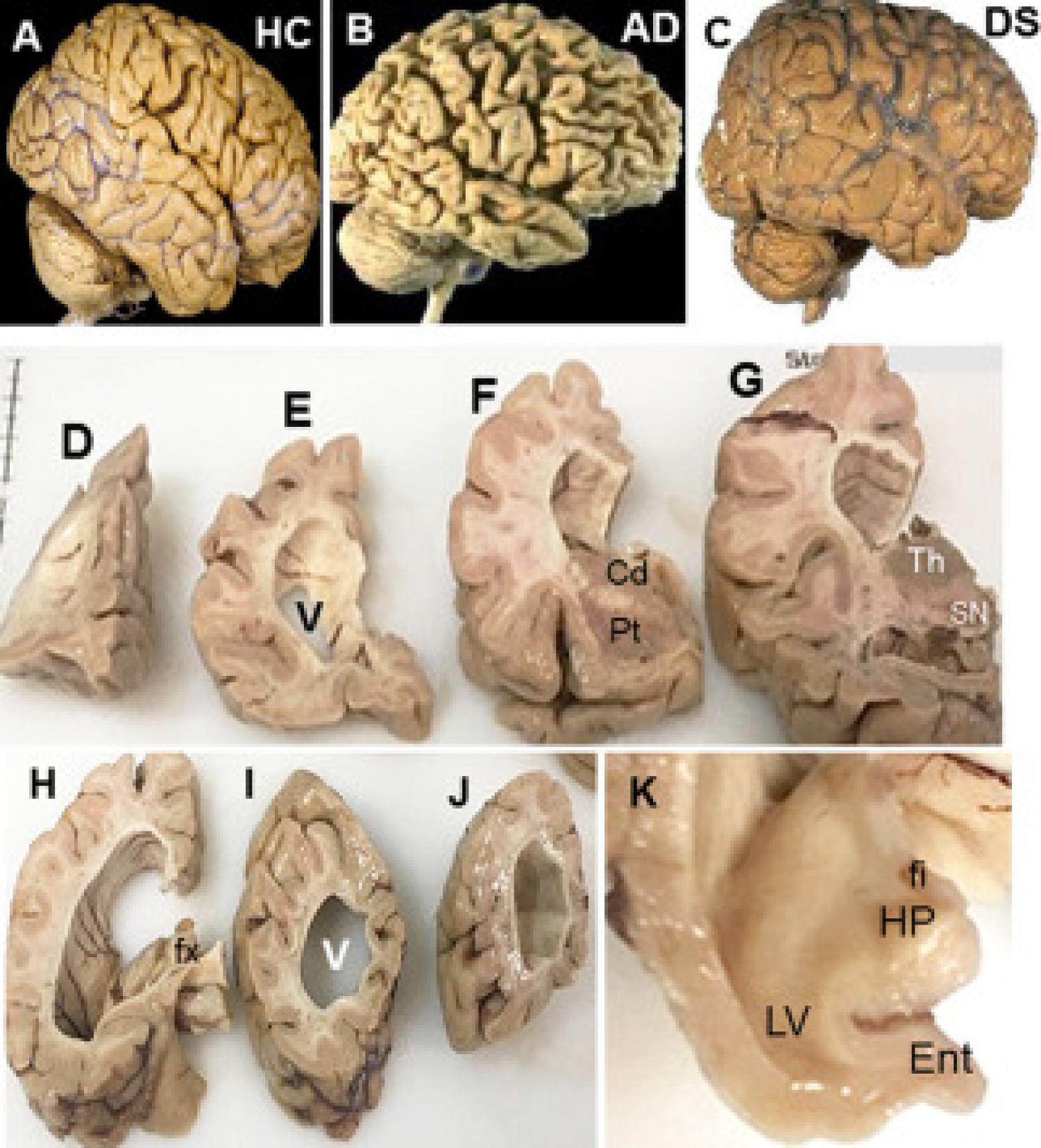
The brains of people with Down syndrome (DS) are structurally and biochemically unique both pre and postnatally. Fetal cortical sulcal development is delayed, cholinergic basal forebrain is compromised, the cerebellar cortex displays phosphorylated tau, synaptic integrity is disrupted, and AD pathology is virtually absent. The adult cortical poles appear blunted, the cerebellum is shrunken and displays diffuse amyloid accumulation, the ventricles are enlarged, neocortex and limbic regions are reduced in size. Striatal cholinergic interneurons display normal morphology despite containing neurofibrillary tangles (NFTs), amyloid plaque deposition occurs prior to NFT pathology, cholinergic neurons within the nucleus basalis degenerate and contain globose NFT pathology, cortical amyloid plaque load is similar in demented and nondemented DS but NFT pathology is greater and more advanced in cases with dementia. Transcript profiling of brain homogenates and single frontal cortex layer V–VI neuron gene array analysis reveals dysregulated classes of transcripts between DS vs control and demented vs nondemented DS cases, respectively, suggesting distinctive genetic signatures that may contribute to dementia in DS.
